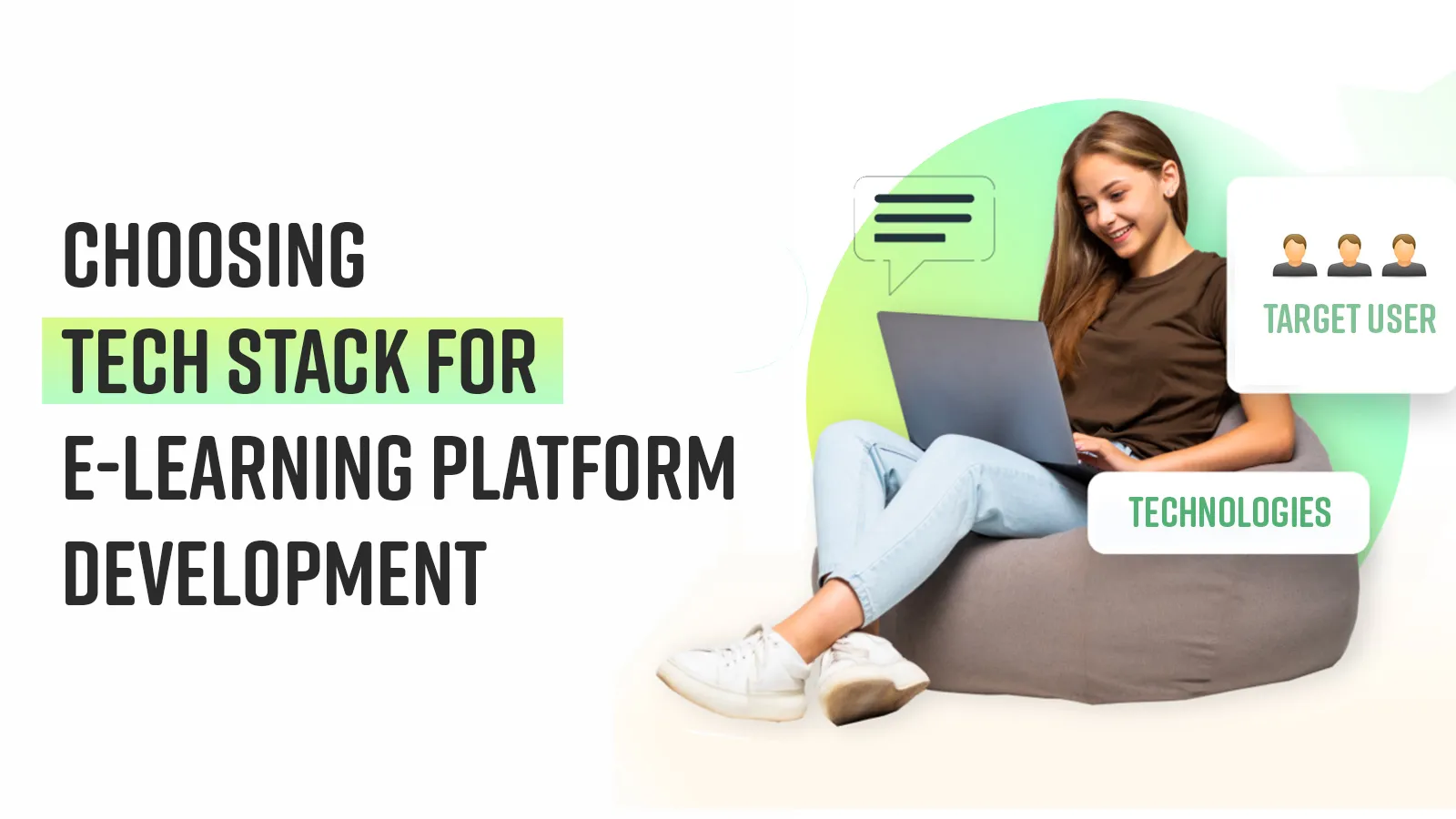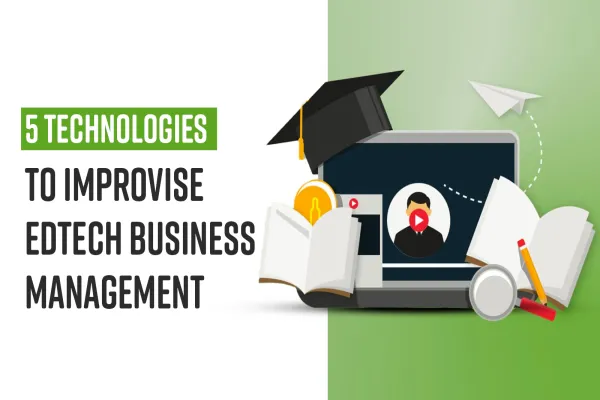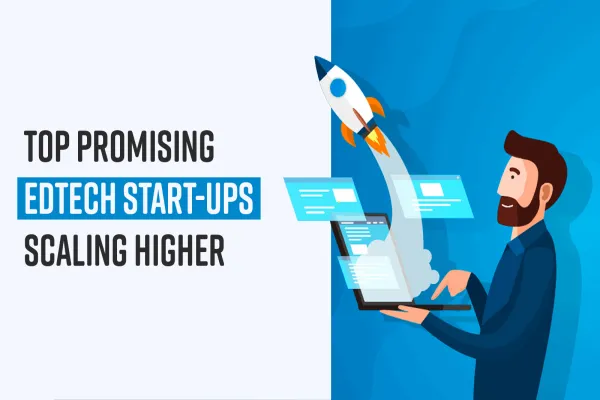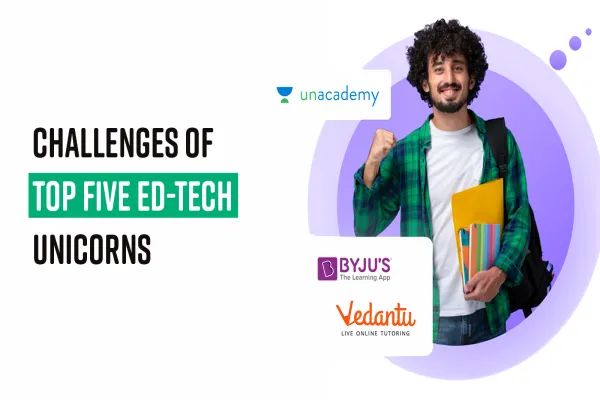The edtech sector is positioned for exponential growth as suggested by Forbes research. In the next 5-7 years, the edtech sector can reach $325 Billion by 2025 and a whopping $1 trillion by 2027. Building your e-learning platform can be an intricate process, sufficing the demands for more efficiency, security, flexibility, and scalability. Profit-making is the direct benefit of a platform that packs enriching features and addresses learners’ pain points.
Choosing the right tech stack for e-learning platform development is a decision that is taken before the development process is initiated. Before we dive into this topic, it is essential to focus on key factors to consider before choosing the best tech stack for developing an e-learning platform.
Factors to consider
Target User
Edtech is now not limited only to school education, even though it still forms the basis of the edtech landscape. Corporate e-learning is a fast booming segment with the market predicted to increase by $38.09 billion from a period of 2020-2024. Both of these segments and higher learning space have different and unique needs. Further, corporate platforms are different from formal education e-learning platforms. Therefore, before choosing the tech stack for an e-learning platform it becomes essential to know whether the end customer is a school student, learners from higher education, or a company employee.
Type of Platform Requirement
Should you be building an LMS (Learning Management System) or an MOOC (Massive Open Online Courses) platform, or a customized platform? It depends upon your end user. Existing LMS systems traditionally offer restricted access with a limited number of end users, while MOOC is the kind of e-learning marketplace, which is open to any number of users. Choice of tech stack will largely depend upon the specific solutions for each kinds of platform.
Scalability
As mentioned earlier, it is also essential to understand the scalability of e-learning apps. This is done by estimating the demand for a product and speculating its future growth. Scalability at the corporate level may mean reaching various departments across locations deployed for different use cases. While MOOC platforms like Udemy, Coursera need to be scalable across geography for diverse types of course material.
Extensibility
Upgrading the launched app is critical to match the ever-changing requirements of your end-users. Choosing the tech stack also depends upon extensibility because you would want to use the technologies that are scaled up easily to match learners’ demands.
MVP
MVP or Minimum Viable Product is a product idea with core features that an e-learning platform offers. MVP allows developers to analyze and draft technical opportunities and budgets, which is one of the critical aspects of developing an e-learning platform.
Budget
The cost of your project will directly influence the choice of tech stack. Suitable options for e-learning project development include free and paid frameworks.
Choosing the best tech stack
- Front-end technologies: This is the part that is visible to the users. A plethora of new technologies keep coming up, so the challenge before the Technology leader lies in having the platform currently popular, robust, and also easy for the development and maintenance team. Some of the popular frontend technology stacks for building e-learning apps are Angular JS, CSS, JavaScript, and HTML5. JavaScript is a flexible technology that performs well with different kinds of frameworks.
- Back-end technologies: Known as server-side development, this part is not visible to your users, but it helps in handling thousands of registered users, and courses offered. Popular backend technologies for building e-learning platforms include PHP, Ruby, Python, and Node.js. Python’s growing popularity as a backend technology comes from its great performance.
- Mobile: Even though most of the users take online courses and classes through the desktop version of the e-learning platform, it must also be optimized for mobile devices. The fastest way of creating a mobile app is by deciding on creating a cross-platform mobile development solution. Popular technologies used for developing this solution include frameworks like Flutter or React Native. These frameworks give a native feel and look. Their biggest advantage is that they require creating just one codebase for both operating systems- iOS and Android. This speeds up the development process and also makes it budget-friendly.
Turning your idea into full-fledged project
Building a valuable e-learning platform requires a team of experienced and talented people. It would be time-consuming and expensive to hire an in-house team to do this job within the tight time frame, which is likely to slow down the process of development while reducing the time-to-market. A talented pool of product engineers stands behind the success of any digital product. Therefore the role of project managers, product engineers, and product designers cannot be understated. That is why it is essential to entrust your project to an IT partner with proven digital expertise.
If you have a project idea and need an IT partner that comes with years of experience in e-learning solutions, explore why you should consider Valuebound. Call us or drop a hello to discuss your project details.





